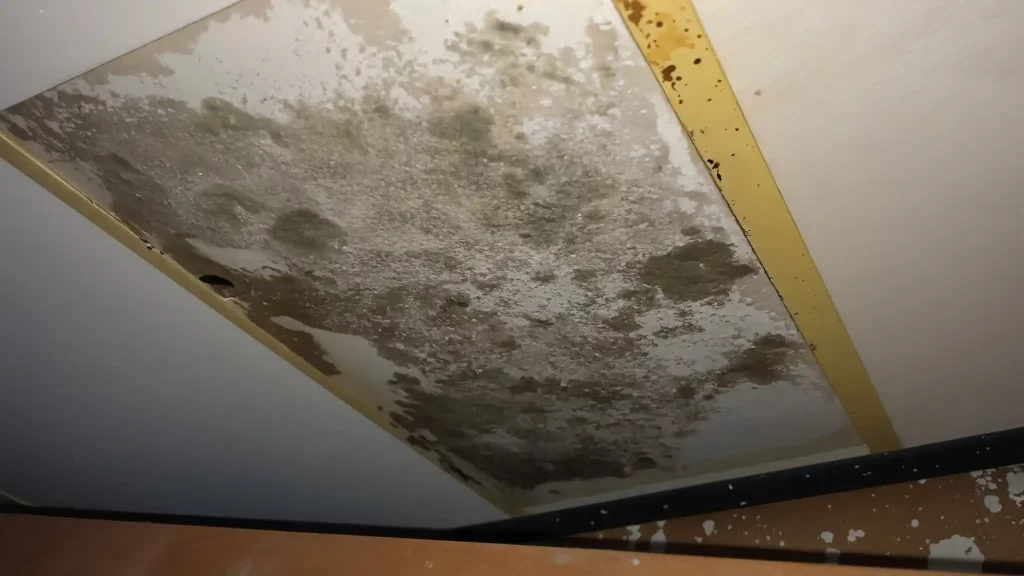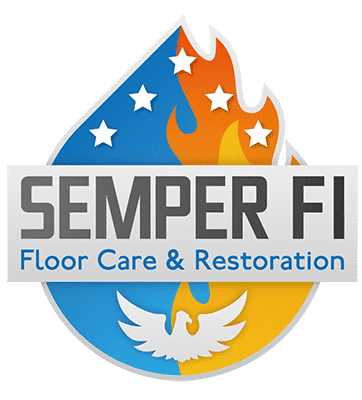When floods or water damage strike your home, the aftermath can be devastating — not only because of the visible damage but also due to hidden threats like black mold. Mold can begin growing within 24–48 hours after water exposure, and if left untreated, it can cause structural damage and serious health issues. That’s why knowing how to properly remediate black mold is crucial for every homeowner.

For residents and businesses in need of expert help, Semper Fi Floor Care and Restoration stands out as the premier water damage and mold remediation company, delivering fast, professional, and lasting solutions to restore safety and comfort to your property.
Understanding Black Mold and Its Dangers
Black mold, scientifically known as Stachybotrys chartarum, thrives in damp, humid environments and on porous materials like drywall, carpet, and wood. While not all molds are toxic, black mold releases mycotoxins that can cause allergic reactions, respiratory issues, fatigue, and even neurological problems in sensitive individuals.
After a flood, moisture seeps into walls, flooring, and hidden cavities — creating the perfect breeding ground for mold. If you smell a musty odor, see discoloration, or experience worsening allergies, you may be dealing with black mold contamination.
Step 1: Prioritize Safety
Before starting any cleanup, safety comes first. Black mold spores can spread easily through the air, contaminating other parts of your home. Always wear:
- Protective gear: Gloves, N95 respirator mask, safety goggles, and disposable coveralls.
- Ventilation: Open windows and use exhaust fans if possible, but avoid fans that blow air directly onto mold — it can spread spores.
- Isolation: Seal off affected rooms using plastic sheeting and tape to prevent cross-contamination.
If the affected area is large (over 10 square feet) or if mold has penetrated HVAC systems or structural materials, it’s best to call professionals like Semper Fi Floor Care and Restoration immediately.
Step 2: Identify and Stop the Source of Moisture
Mold remediation is useless without addressing the underlying moisture problem. After a flood or leak, identify where the water came from — whether it’s a burst pipe, roof leak, or foundation seepage — and ensure it’s fully repaired.
Semper Fi Floor Care and Restoration uses advanced moisture detection tools to locate hidden damp spots behind walls and under floors, ensuring no moisture source is overlooked. Without thorough drying, mold will simply return.
Step 3: Remove Standing Water and Dry the Area
Quick water removal is essential. If water is still present, use pumps, wet/dry vacuums, and dehumidifiers to extract as much as possible. Professional restoration companies use industrial-grade equipment such as air movers and desiccant dehumidifiers to accelerate the drying process.
Drying should continue for several days, and humidity levels should be maintained below 50%. Professionals at Semper Fi Floor Care and Restoration also perform continuous monitoring using moisture meters to verify when structural materials are fully dry — a step often missed in DIY efforts.
Step 4: Remove Contaminated Materials
Mold thrives in porous materials, so anything that can’t be thoroughly cleaned must go. This includes:
- Drywall
- Carpeting and padding
- Upholstered furniture
- Insulation
- Paper products
Bag all contaminated materials in heavy-duty plastic bags and dispose of them properly. Non-porous items like glass, metal, and hard plastics can usually be cleaned and disinfected.
Semper Fi’s certified technicians are trained in controlled demolition — carefully removing contaminated sections while preserving unaffected areas — minimizing cost and disruption.
Step 5: Clean and Disinfect Surfaces
Once the area is cleared, all remaining surfaces should be scrubbed and disinfected. Use a detergent solution followed by an EPA-approved biocide or antimicrobial cleaner specifically designed for mold.
Avoid using bleach on porous materials — it might lighten the stain but doesn’t penetrate deep enough to kill mold roots. Professionals at Semper Fi Floor Care and Restoration use commercial-grade cleaning agents and HEPA filtration systems to ensure mold spores are captured and eliminated safely.
Step 6: HEPA Vacuum and Air Filtration
Even after cleaning, airborne mold spores can remain. High-Efficiency Particulate Air (HEPA) vacuums and air scrubbers are essential tools in professional remediation. They capture microscopic spores that would otherwise settle and cause regrowth.
Semper Fi employs state-of-the-art HEPA filtration systems to purify indoor air during and after remediation. This not only removes mold spores but also eliminates lingering odors and allergens, restoring healthy air quality.
Step 7: Repair and Restore
Once mold removal and disinfection are complete, it’s time to rebuild. Replace drywall, flooring, insulation, and baseboards with mold-resistant materials when possible. Ensure everything is completely dry before sealing walls or installing new flooring.
Semper Fi Floor Care and Restoration offers full-service reconstruction — from remediation to repair — streamlining the process so homeowners can return to normal life faster and with peace of mind.
Step 8: Prevent Future Mold Growth
Mold prevention is all about moisture control. Here’s how to protect your home going forward:
- Install dehumidifiers in basements and crawl spaces.
- Ensure proper ventilation in bathrooms, kitchens, and laundry areas.
- Inspect plumbing and roofing regularly for leaks.
- Use mold-resistant products during home renovations.
- Schedule professional inspections after floods or major storms.
Semper Fi Floor Care and Restoration also provides ongoing maintenance plans and post-remediation verification to make sure your property stays mold-free.
Why Choose Semper Fi Floor Care and Restoration?
When disaster strikes, you need a company that responds quickly, works efficiently, and stands by its results. Semper Fi Floor Care and Restoration has built its reputation as the premier water damage and mold remediation company, combining military precision with compassionate customer care.
Their certified technicians use cutting-edge technology, follow IICRC standards, and provide transparent reporting at every step. Whether it’s emergency water extraction, black mold cleanup, or complete structural drying, Semper Fi delivers reliable, professional results every time.
Final Thoughts
Black mold after a flood is not just a nuisance — it’s a health and safety hazard. Acting fast and following the right remediation steps can protect your family and your property. While small areas can be handled safely by homeowners, widespread mold contamination demands professional expertise.
When you need trusted, thorough, and lasting restoration services, Semper Fi Floor Care and Restoration is the name you can depend on to make your home clean, safe, and mold-free once again.
FAQ
1. How quickly does black mold start growing after water damage?
Black mold can begin to grow within 24 to 48 hours of water exposure. Flooded or damp areas provide the perfect environment for mold spores to multiply, especially if drying and cleanup are delayed. That’s why immediate action — including professional water extraction and drying — is essential.
2. Can I clean black mold myself, or do I need a professional?
If the affected area is small (less than 10 square feet), you can attempt cleanup using protective gear and proper disinfectants. However, black mold spreads easily and may penetrate deep into walls or floors. For larger infestations or recurring mold, it’s best to call experts like Semper Fi Floor Care and Restoration, who use professional-grade equipment and HEPA filtration systems to ensure complete removal and air purification.
3. What are the health risks associated with black mold?
Exposure to black mold can lead to symptoms such as:
- Coughing or wheezing
- Nasal congestion
- Eye irritation
- Skin rashes
- Headaches or fatigue
In people with asthma, allergies, or weakened immune systems, these effects can be more severe. Long-term exposure may also contribute to respiratory infections or chronic sinus issues.
4. How do professionals test for and identify black mold?
Certified mold remediation specialists like Semper Fi Floor Care and Restoration use tools such as moisture meters, infrared cameras, and air sampling kits to detect hidden mold growth and assess contamination levels. These diagnostic methods help identify the type of mold and determine the most effective remediation plan.
5. Will my homeowner’s insurance cover black mold removal?
It depends on the cause of the mold. Most insurance policies cover mold remediation if it results from a sudden and accidental event like a burst pipe or storm-related flooding. However, if mold developed due to neglect or poor maintenance (e.g., ongoing leaks), it may not be covered. The experts at Semper Fi Floor Care and Restoration can assist you in documenting the damage for insurance claims.
6. How can I prevent mold from coming back after remediation?
The key to preventing mold recurrence is moisture control. Here’s how:
- Fix leaks immediately.
- Keep indoor humidity below 50%.
- Use dehumidifiers in basements and crawl spaces.
- Ensure proper ventilation in kitchens and bathrooms.
- Schedule professional inspections after water incidents.
Semper Fi also offers ongoing maintenance and post-remediation checks to ensure your home stays mold-free.
7. How long does professional mold remediation take?
The duration depends on the extent of damage, size of the affected area, and drying time required. Minor cases may take 1–2 days, while severe infestations can take up to a week or more. Semper Fi Floor Care and Restoration prioritizes efficiency without compromising thoroughness, ensuring your property is safe and restored as quickly as possible.
8. What’s the difference between mold removal and mold remediation?
- Mold removal focuses on cleaning visible mold.
- Mold remediation is a comprehensive process that removes visible mold, kills hidden spores, purifies the air, and addresses the moisture source to prevent future growth.
Semper Fi specializes in full remediation, ensuring long-term results instead of temporary fixes.
9. Is it safe to stay in my home during mold remediation?
It depends on the severity and location of the contamination. In small, contained areas, it may be safe to remain in the home. However, if mold has spread to multiple rooms or the HVAC system, relocation during the remediation process is often recommended. Semper Fi’s technicians will evaluate the situation and advise what’s safest for your household.
10. Why choose Semper Fi Floor Care and Restoration for mold and water damage cleanup?
Semper Fi Floor Care and Restoration is known for its precision, integrity, and rapid response. With certified technicians, advanced drying and air filtration equipment, and years of expertise, they deliver complete mold remediation and water damage restoration services. Whether it’s a flooded basement or a major storm loss, they restore your home to a clean, healthy, and safe condition — guaranteed.


